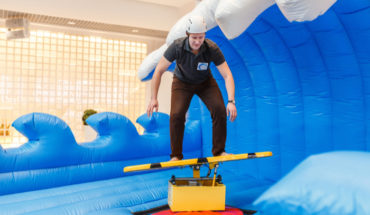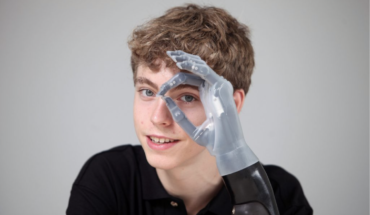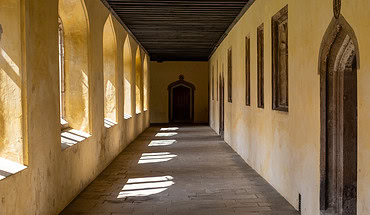RAEng MacRobert Award Winners
Every year, the Royal Academy of Engineering MacRobert Award is presented to the engineers behind the UK’s most exciting engineering innovation.
The 2025 MacRobert Award winner is:
OrganOx for their breakthrough devices preserving livers and kidneys outside the body for extended periods of time thus significantly increasing transplant success, reducing healthcare costs, and saving lives globally.
OrganOx
OrganOx has developed two devices that maintain livers and kidneys in a functioning state outside the body for at least twice as long as conventional cold preservation techniques, dramatically increasing the number of transplants for patients, eradicating night-time operations for clinicians, and reducing overall healthcare costs for providers. A third, patient-connected device can also be used to provide ‘liver dialysis’ using either a human or porcine organ outside the body, to help patients in liver failure to recover without the need for a transplant.
Operating at body temperature (37C), the devices replicate the physiological conditions of an organ within the body by perfusing it with a red-cell suspension reconstituted from donor blood of the same blood type. This allows fully automated, operator-independent preservation of an organ in a functioning state outside the body for periods of up to 24 hours clinically and several days pre-clinically.
The technology, which was initially designed to preserve livers, has enabled over 6,000 transplants across four continents and twelve countries. Medical facilities adopting the technology have reported up to a 30% net increase in transplants, with waiting times and waiting list mortality cut by more than half.
The technology for preserving livers, and its more recent counterpart for kidneys, represent two of the most complex medical devices ever designed and built in the UK. With hydraulic, pneumatic and haemodynamic sub-systems and remote-access capabilities, the devices can be used safely in operating theatres, during transport by road or in flight, or when directly connected to a patient when providing extracorporeal liver support.
The 2025 MacRobert Award finalists are:
Microsoft Azure Fibre for their revolutionary hollow core optical fibre technology – replacing traditional glass with air – dramatically enhancing data transmission, speed and energy efficiency.
Synthesia for developing the world’s first text to video platform pioneering AI video platform enabling users to create lifelike, multilingual videos using hyper-realistic digital avatars—without the need for cameras or studios
Microsoft Azure Fibre
Optical fibres transmit 500 billion gigabytes of data every day, supporting global communication, navigation and manufacturing. But the performance of traditional optical fibres, optimised over more than 50 years, has reached the fundamental physical limits of the solid glass making up their core. Microsoft Azure Fibre (formerly Lumenisity) revolutionises the way data is transmitted by replacing the glass core with air. Their hollow core optical fibre technology comprises a central light-guiding cavity surrounded by microscopic, nested glass tubes running the length of the fibre, enabling virtually instantaneous data transfer.
This stable, low-latency innovation dramatically improves the speed of transmission and enhances energy efficiency, needing fewer power-hungry electronic components over longer distances.
It will drive a major leap forward in how the internet evolves, enabling more flexible datacentre placement and meeting the growing demand for high-volume data transfer driven by growth in the use of AI. The improved characteristics will enable the development of 6G and edge-computing and other ‘tactile’ applications where response time is key, such as remote medicine where timing is critical for life-saving measures.
The technology represents the most significant advancement in fibre technology since standard solid core fibre, completely transforming perceptions of hollow core optical fibre from a mere curiosity to a game-changer for global communications.
Synthesia
Shortlisted for developing the world’s first and largest human-centric AI video platform, Synthesia allows users to create and distribute professional-quality videos directly from a web browser without cameras, lighting, studios or specialist editing software.
At the heart of the platform are a collection of hyper-realistic digital avatars that look, sound and behave like real people, avoiding the ‘uncanny valley’ effect that impacted traditional computer graphics. The team at Synthesia started by improving lip motion for better lip sync, face motion and dynamics to provide facial expressions, then added dynamics for the head, upper torso, arms and hands to deliver non-verbal cues in speech. The result is a large, generative AI audio and video model capable of interpreting text input, producing natural speech in over 140 languages, interpreting vocal intonations and delivering complex body language for non-verbal cues to express emotion.
Synthesia took an early decision to develop and deploy its technology responsibly. It was the first generative AI company to create a responsible framework for synthetic media, preventing the formation of non-consensual deepfakes and introducing content moderation at the point of creation. It is now a trusted brand for AI video creation and distribution in the enterprise space with more than one million users across 65,000 businesses. These include over 70% of Fortune 100 companies who are using Synthesia’s technology to generate videos for employee training and internal communication, customer support, sales enablement or product marketing.
- Is your doctor’s AI safe? - 20th November 2025
- New NYC ‘Liver ICU’ Lab Transforming Liver Disease Treatments - 24th October 2025
- Quantum Imaging Research could improve retinal scans - 17th October 2025






